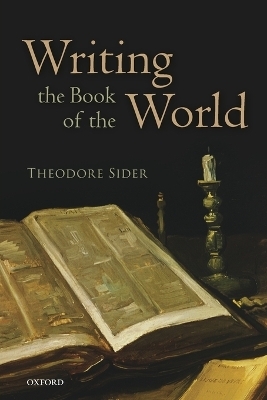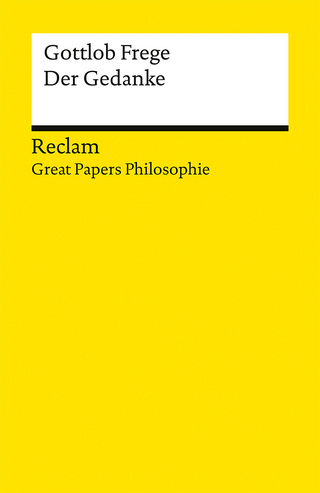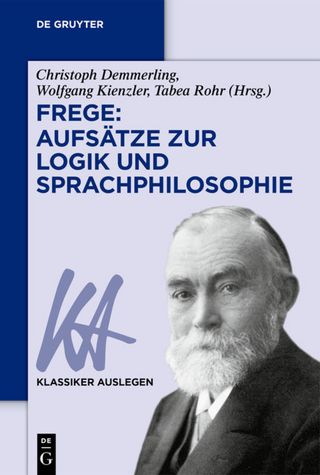
Writing the Book of the World
Seiten
2013
Oxford University Press (Verlag)
978-0-19-968750-3 (ISBN)
Oxford University Press (Verlag)
978-0-19-968750-3 (ISBN)
Theodore Sider presents a broad new vision of metaphysics centred on the idea of structure. To describe the world well we must use concepts that 'carve at the joints', so that conceptual structure matches reality's structure. This approach illuminates a wide range of topics, such as time, modality, ontology, and the status of metaphysics itself.
In order to perfectly describe the world, it is not enough to speak truly. In this ambitious and ground-breaking book, Theodore Sider argues that for a representation to be fully successful, truth is not enough; the representation must also use the right concepts--concepts that 'carve at the joints'--so that its conceptual structure matches reality's structure. There is an objectively correct way to 'write the book of the world'.
According to Sider, metaphysics is primarily about fundamentality rather than necessity, conceptual analysis, or ontology. Fundamentality is understood in terms of structure: the fundamental truths are those truths that involve structural (joint-carving) concepts. Sider argues that part of the theory of structure is an account of how structure connects to other concepts. For example, structure can be used to illuminate laws of nature, explanation, reference, induction, physical geometry, substantivity, conventionality, objectivity, and metametaphysics. Another part is an account of how structure behaves. Since structure is a way of thinking about fundamentality, Sider's account implies distinctive answers to questions about the nature of fundamentality. These answers distinguish his theory of structure from other recent theories of fundamentality, including Kit Fine's theory of ground and reality, the theory of truthmaking, and Jonathan Schaffer's theory of ontological dependence.
In order to perfectly describe the world, it is not enough to speak truly. In this ambitious and ground-breaking book, Theodore Sider argues that for a representation to be fully successful, truth is not enough; the representation must also use the right concepts--concepts that 'carve at the joints'--so that its conceptual structure matches reality's structure. There is an objectively correct way to 'write the book of the world'.
According to Sider, metaphysics is primarily about fundamentality rather than necessity, conceptual analysis, or ontology. Fundamentality is understood in terms of structure: the fundamental truths are those truths that involve structural (joint-carving) concepts. Sider argues that part of the theory of structure is an account of how structure connects to other concepts. For example, structure can be used to illuminate laws of nature, explanation, reference, induction, physical geometry, substantivity, conventionality, objectivity, and metametaphysics. Another part is an account of how structure behaves. Since structure is a way of thinking about fundamentality, Sider's account implies distinctive answers to questions about the nature of fundamentality. These answers distinguish his theory of structure from other recent theories of fundamentality, including Kit Fine's theory of ground and reality, the theory of truthmaking, and Jonathan Schaffer's theory of ontological dependence.
Theodore Sider is Frederick J. Whiton Chair of Philosophy at Cornell University. He completed his PhD at the University of Massachusetts, Amherst, and has previously held positions at New York University, the University of Rochester, Syracuse University, and Rutgers University. He is the author of Riddles of Existence: A Guided Tour of Metaphysics (OUP, 2005), Four-Dimensionalism: An Ontology of Persistence and Time (OUP, 2001), and a textbook: Logic for Philosophy (OUP, 2010).
1. Structure ; 2. Primitivism ; 3. Connections ; 4. Substantivity ; 5. Metametaphysics ; 6. Beyond the predicate ; 7. Questions ; 8. Rivals ; 9. Ontology ; 10. Logic ; 11. Time ; 12. Modality ; 13. A Worldview ; References
| Erscheint lt. Verlag | 28.11.2013 |
|---|---|
| Verlagsort | Oxford |
| Sprache | englisch |
| Maße | 158 x 235 mm |
| Gewicht | 489 g |
| Themenwelt | Geisteswissenschaften ► Philosophie ► Logik |
| Geisteswissenschaften ► Philosophie ► Metaphysik / Ontologie | |
| ISBN-10 | 0-19-968750-1 / 0199687501 |
| ISBN-13 | 978-0-19-968750-3 / 9780199687503 |
| Zustand | Neuware |
| Informationen gemäß Produktsicherheitsverordnung (GPSR) | |
| Haben Sie eine Frage zum Produkt? |
Mehr entdecken
aus dem Bereich
aus dem Bereich


